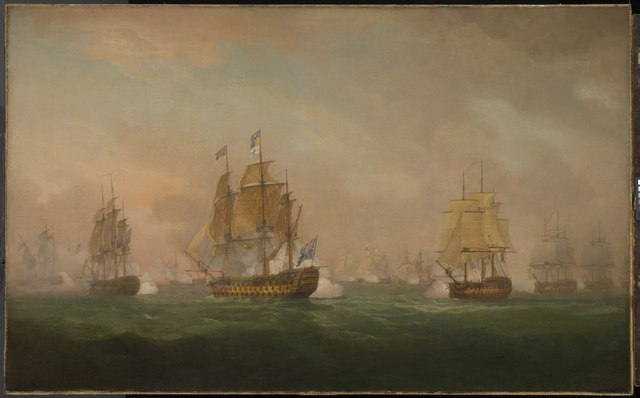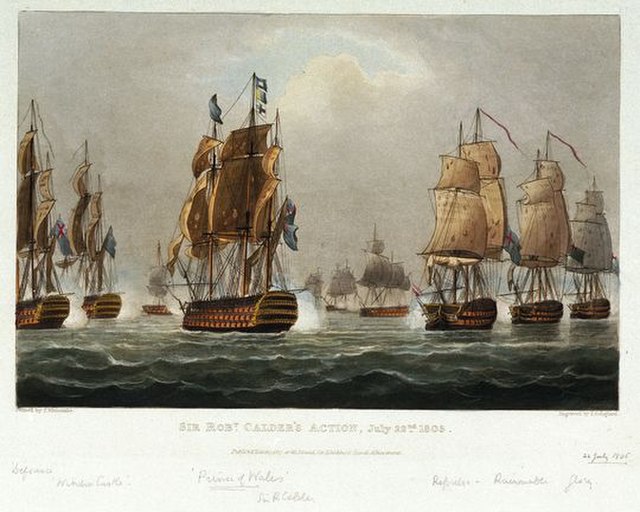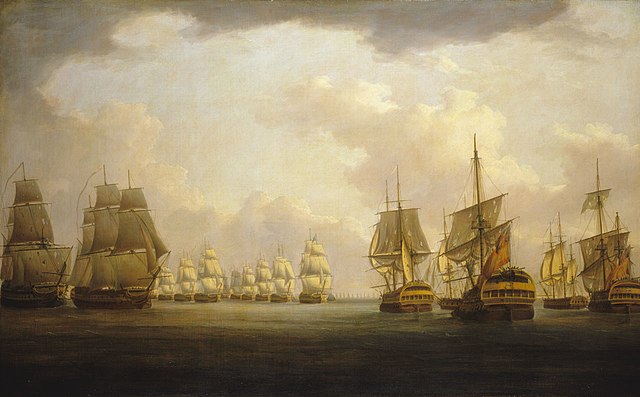Battle of Cape Finisterre (1805)
In the Battle of Cape Finisterre off Galicia, Spain, the British fleet under Admiral Robert Calder fought an indecisive naval battle against the combined Franco-Spanish fleet which was returning from the West Indies. In the ensuing battle the British captured two Spanish ships of the line, but failed to prevent the joining of French Admiral Pierre de Villeneuve's fleet to the squadron of Ferrol and to strike the shattering blow that would have freed Great Britain from the danger of an invasion. Calder was later court-martialled and severely reprimanded for his failure and for avoiding the renewal of the engagement on 23 and 24 July. At the same time, in the aftermath Villeneuve elected not to continue on to Brest, where his fleet could have joined with other French ships to clear the English Channel for an invasion of Great Britain.
Admiral Sir Robert Calder's action off Cape Finisterre, 23 July 1805, William Anderson
Defiance, Windsor Castle, Prince of Wales, Repulse, Raisonable, and Glory, an engraving after Thomas Whitcombe
Day after the action - British frigates have two Spanish prizes, the Firme and the San Rafael under tow on the right. Painting by William Anderson
Admiral Sir Robert Calder, 1st Baronet, was a British naval officer who served in the Seven Years' War, the American Revolutionary War, the French Revolutionary Wars and the Napoleonic Wars. For much of his career he was regarded as a dependable officer, and spent several years as Captain of the Fleet under Admiral Sir John Jervis. However, he is chiefly remembered for his controversial actions following the Battle of Cape Finisterre in 1805 which resulted in his court-martial. Though he was removed from his sea command, he was retained in the Navy and later served as Commander-in-Chief of the base at Plymouth.
Portrait by Lemuel Francis Abbott, c. 1787/90
Battle of Cape Finisterre, by William Anderson
Historical Marker for Robert Calder near his grave site in Upham, England, United Kingdom





